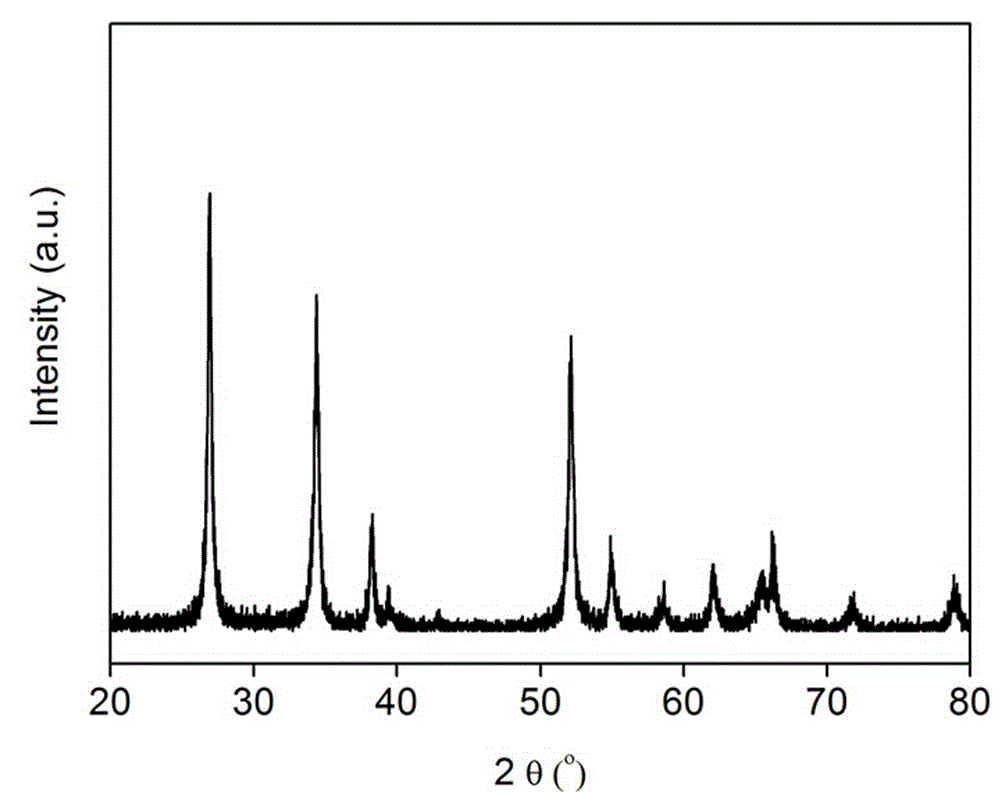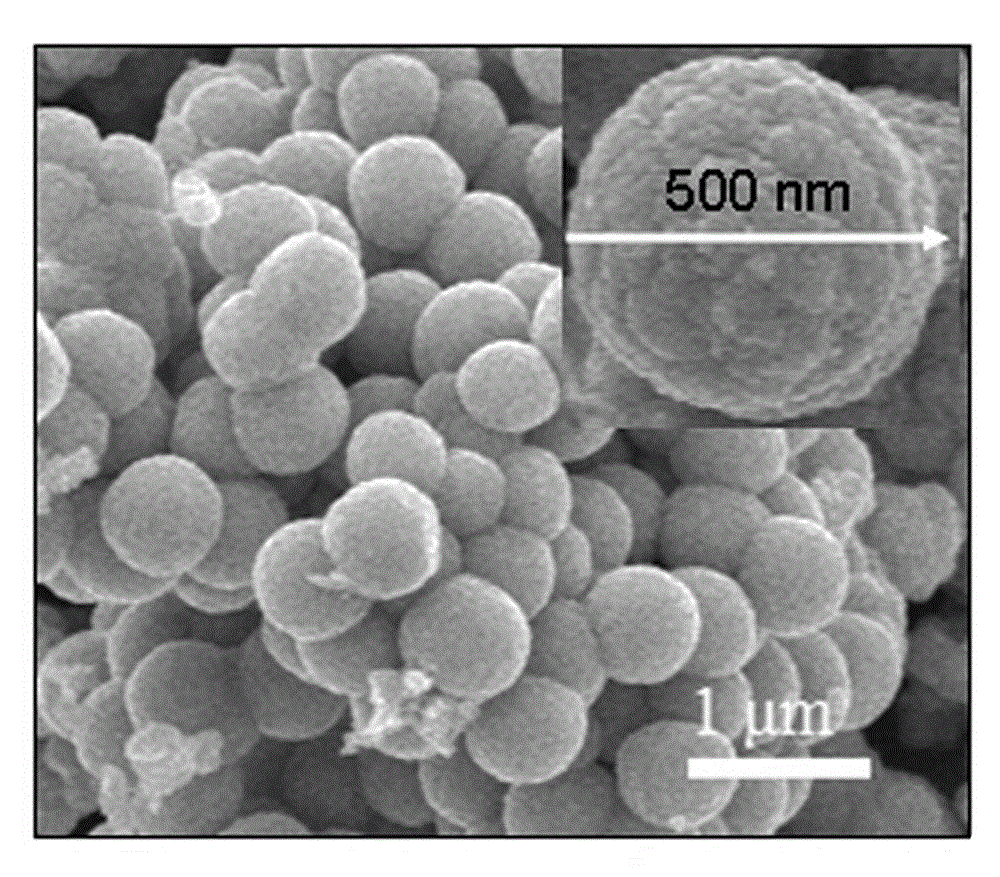Preparation method for spherical tin dioxide self-assembled from nano-fragments
A tin dioxide and self-assembly technology, applied in the directions of tin oxide, nanotechnology, nanotechnology, etc., can solve the problems of difficult tin dioxide morphology, complicated operation, large energy consumption, etc., and achieve easy control of process parameters and preparation process. Simple, uniform particle size effect
- Summary
- Abstract
- Description
- Claims
- Application Information
AI Technical Summary
Problems solved by technology
Method used
Image
Examples
Embodiment 1
[0022] A method for preparing spherical tin dioxide self-assembled by nano-fragments, comprising the steps of:
[0023] (1) Dissolve 3g of tin tetrachloride in 50ml of ethanol, after fully dissolved, add 1.5g of terephthalic acid, then add 0.20~0.30ml of 40% hydrofluoric acid, continue stirring for 30min to fully mix ;
[0024] (2) Transfer the mixed solution obtained in step (1) into the reactor, and react at a constant temperature of 220°C for 13 hours;
[0025] (3) After the reaction kettle is cooled, the sample is taken out, and the product is obtained after centrifugation, washing and drying.
Embodiment 2
[0027] A method for preparing spherical tin dioxide self-assembled by nano-fragments, comprising the steps of:
[0028] (1) Dissolve 3.8g of tin tetrachloride in 50ml of ethanol, after fully dissolved, add 1.2g of terephthalic acid, then add 0.30~0.50ml of hydrofluoric acid with a concentration of 40%, and continue stirring for 30min to fully mix;
[0029] (2) Transfer the mixed solution obtained in step (1) into the reactor, and react at a constant temperature of 220°C for 13 hours;
[0030] (3) After the reaction kettle is cooled, the sample is taken out, and the product is obtained after centrifugation, washing and drying.
Embodiment 3
[0032] A method for preparing spherical tin dioxide self-assembled by nano-fragments, comprising the steps of:
[0033] (1) Dissolve 3.5g of tin tetrachloride in 55ml of ethanol. After fully dissolving, add 2g of terephthalic acid, then add 2ml of acetic acid with a concentration of 99.8%, and continue to stir for 30 minutes to fully mix;
[0034] (2) Transfer the mixed solution obtained in step (1) into the reactor, and react at a constant temperature of 220°C for 12 hours;
[0035] (3) After the reaction kettle is cooled, the sample is taken out, and the product is obtained after centrifugation, washing and drying.
PUM
 Login to View More
Login to View More Abstract
Description
Claims
Application Information
 Login to View More
Login to View More - R&D
- Intellectual Property
- Life Sciences
- Materials
- Tech Scout
- Unparalleled Data Quality
- Higher Quality Content
- 60% Fewer Hallucinations
Browse by: Latest US Patents, China's latest patents, Technical Efficacy Thesaurus, Application Domain, Technology Topic, Popular Technical Reports.
© 2025 PatSnap. All rights reserved.Legal|Privacy policy|Modern Slavery Act Transparency Statement|Sitemap|About US| Contact US: help@patsnap.com



